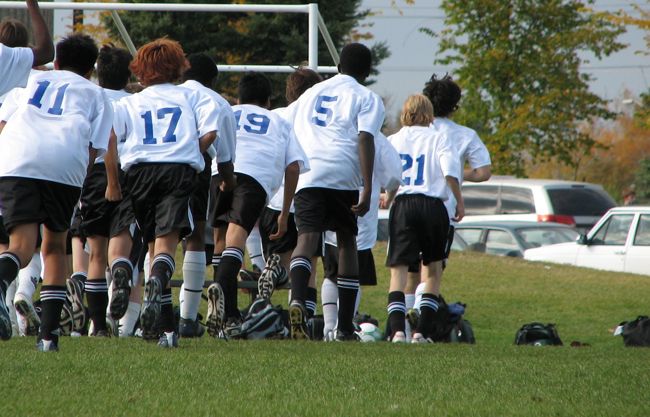
When an athlete reaches the college level (specifically Division I), you expect them to already have certain movement things mastered. I mean body weight exercises, running, skipping, jumping...things that most six-year-olds can do without batting an eye.
When I left the collegiate setting and began working with younger athletes, I realized where it all began. The college kids didn't possess those skills because no one is teaching them as they grow up. We put more time and effort into teaching a kid how to throw a baseball harder, yet he lacks the strength, mobility, and flexibility to really do it right.
While this list could probably be much longer, these ten things are extremely important for young athletes (at least ages 10 and up) to begin to master.
- Body Weight Squat - The squat is one of the most basic movements for body awareness and strength. It is also a precursor to other movements like jumping, hopping and bounding. Toddlers just learning to walk and pick things up off the ground start off doing a perfect squat and somewhere along the way, we mess it up.
- Skipping - This is a basic fundamental motor pattern that should be mastered. It teaches opposite arm and leg relationship and takes a bit of coordination. Not to mention, the basic movements needed for running, like staying on the balls of the feet and proper arm mechanics.
- Pushups - While this is on every Dad's list of "Things To Make Your Son Do Every Day To Stay Ahead Of The Game" it can easily get out of control if not done properly. I've seen many kids who say they do pushups every night, yet they are done poorly. Whether you start with plank holds or incline pushups or any variation, young athletes need to learn body position.
- Chin-ups/Flex Arm Hang - Apparently this is part of most kids' Presidential Fitness Test...yet when I ask kids how often they practice them in P.E. class, they say never. Hmm...that's another conversation for another day. Again, there are a million ways to help kids learn to do a chin-up or flex arm hang, but I think we can all agree that it's a fundamental skill (mastering your body weight) that all kids should have.
- Jump Rope - I'm surprised at the amount of kids that don't know how to jump rope. Rocky would be ashamed of us.
- Hip Hinge - Hinging the hips, while keeping the spine in alignment, is extremely difficult for most young athletes to understand. Most just bend forward at the waist, rounding the back. This is a key position for teaching them to create spinal stability.
- Lunge/Split Squat - Another basic movement that not only builds into more difficult strength moves, but can be a great movement screen as well.
- Landing - Learning how to stick a landing position and absorb the forces through the body are another key thing to teach young athletes. They need to know how to keep their posture in the right position (not letting their chest flop to the floor), and have a soft landing.
- Jumping and Hopping - While many coaches would argue that a kid should know how to land before they can jump any higher (and I do agree), basic jumping skills should be mastered. Again, timing of the arms with the legs and overall body control. And with hopping, again, I'm surprised that most kids don't have the body control and strength to hop on one foot.
This certainly isn't an exhaustive list, nor did I include any lifting exercises. This list could be applied to kids as young as eight all the way up through college age.
I asked other well-known coaches in the industry the same question, and they all had similar responses to my list of nine. Some even included weight training exercises like bench press and deadlift, which I agree with. And I also believe that if an athlete knows how to squat and hip hinge, they will also be able to grasp the concept of the deadlift quickly.
As a former Division I strength coach, I saw many, many college freshman who lacked at least 50 percent of the movements above...often times more. Some of the coaches I talked to said they would almost rather the athlete know nothing before coming to them, so they could teach the athlete properly from the start and not have to correct any bad habits. While I agree to an extent (after all, we trust ourselves the most, right?), it's not practical. If you are a high school or college coach, the athlete will more than likely have come across a coach or two who has already had them doing these exercises.
So, hopefully if we all continue to do our jobs really well, every coach will be educated on proper exercise execution. Pushups, squats and jump rope aren't just conditioning drills to run 50 kids through as fast as possible. When done properly, they build the athlete from the ground up.








